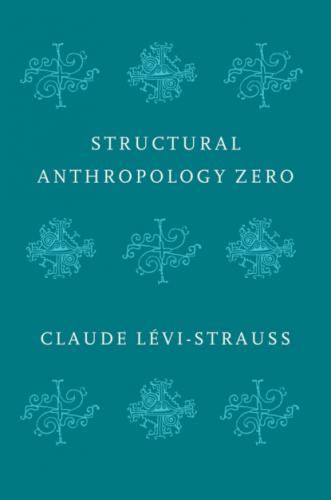25 25 “Model” is to be understood here not as a reality to be imitated but as a system revealing properties that cannot be readily observed otherwise. Models are generally formal, but the Nambikwara offered a rare empirical case of a social reality reduced to its essential properties.
26 26 See Emmanuelle Loyer, Paris à New York: intellectuels et artistes français en exil 1940–1947, Paris, Grasset, 2005.
27 27 On this point, see the very influential 1949 conference of the British sociologist T. H. Marshall, entitled “Citizenship and Social Class” (republished in Citizenship and Social Class, and Other Essays, Cambridge, CUP, 1950).
28 28 The report by the British economist William Beveridge in 1942 laid the theoretical bases for the welfare state. The relevant passage can be found in Tristes Tropiques, without, however, the discussion of forms of reciprocity that preceded it.
29 29 See the note on Tristes Tropiques in Claude Lévi-Strauss, Œuvres, Paris, Gallimard, 2008, pp. 1676–8.
30 30 Eribon, Conversations with Claude Lévi-Strauss, p. 50.
31 31 Daniel Fabre, “D’Isaac Strauss à Claude Lévi-Strauss: le judaïsme comme culture,” in Philippe Descola (ed.), Claude Lévi-Strauss, un parcours dans le siècle, Paris, Odile Jacob, 2012, p. 281.
32 32 Quoted in Loyer, Lévi-Strauss, p. 293.
33 33 See Wiktor Stoczkowski, Anthropologies rédemptrices: le monde selon Lévi-Strauss, Paris, Hermann, 2008, pp. 139–84.
34 34 Lévi-Strauss, “Chers tous deux,” p. 559.
35 35 Lévi-Strauss, Tristes Tropiques, New York, Atheneum, 1984, p. 24.
36 36 Ibid. Regarding this formulation, see above, pp. 27–9.
37 37 Eribon, Conversations with Claude Lévi-Strauss, p. 50.
38 38 Lévi-Strauss, Tristes Tropiques, p. 406.
39 39 Document written for the Peace Aims Group Council of Foreign Relations, cited in Loyer, Lévi-Strauss, p. 233.
40 40 Conversations with Claude Lévi-Strauss, p. 256.
41 41 Claude Lévi-Strauss, “Diogène couché,” Les Temps Modernes, no. 110 (1955), p. 1194.
42 42 Eribon, Conversations with Claude Lévi-Strauss, p. 256.
43 43 See the note to Tristes Tropiques in Oeuvres, pp. 1711–12.
44 44 See Stoczkowski, Anthropologies rédemptrices, pp. 26–33.
45 45 Ibid., pp. 224–42.
46 46 Claude Lévi-Strauss, “The Three Humanisms,” in Structural Anthropology, vol. 2, Chicago, University of Chicago Press, 1976, pp. 271–4.
47 47 Lévi-Strauss, “Reflections on Liberty,” The View from Afar, Chicago, University of Chicago Press, 1985, p. 282.
48 48 Lévi-Strauss, Tristes Tropiques, p. 57.
49 49 Claude Lévi-Strauss, in an interview with Victor Malka in 1983 (L’Arche, no. 317 (1983), p. 57). On this question, see the essential study by Fabre, “D’Isaac Strauss à Claude Lévi-Strauss.”
50 50 Lévi-Strauss, Tristes Tropiques, pp. 24–7.
51 51 Ibid., p. 30.
52 52 Ibid., p. 24.
53 53 Lévi-Strauss, Tristes Tropiques, p. 128. See Vincent Debaene, “Portrait de l’ethnologue en Lazare,” in Michel Izard (ed.), Claude Lévi-Strauss, Cahiers de l’Herne, no. 82 (2004), pp. 102–4.
54 54 Lévi-Strauss, Tristes Tropiques, p. 129.
55 55 Ibid.
56 56 “In Pointe-Rouge (one of the camps on the island), to a young and most distinguished scholar, who was to pursue his research in New York … No, you are not French, you are a Jew, and the Jews who call themselves French are worse than the foreign Jews.” André Breton, “Troubled Waters,” Martinique: Snake Charmer, Austin, University of Texas Press, 2008, p. 68.
57 57 Lévi-Strauss, Tristes Tropiques, p. 29.
58 58 See Stoczkowski, Anthropologies rédemptrices, pp. 213–42.
59 59 Lévi-Strauss, Tristes Tropiques, pp. 149–50.
60 60 Ibid., p. 23.
61 61 Lévi-Strauss, “Diogène couché,” p. 1217.
62 62 Maurice Blanchot, “Literature and the Right to Death” [1947], in The Work of Fire, Stanford, CA, Stanford University Press, 1995, pp. 300–44; Jean Cayrol, Lazare parmi nous, Paris, Seuil, 1950.
63 63 Lévi-Strauss, Tristes Tropiques, pp. 24 and 41, respectively. See Vincent Debaene, “Cadrage cannibale: les photographies de Tristes tropiques,” Gradhiva, no. 27 (2018), pp. 90–117.
64 64 See “En marge de Tristes tropiques,” in Œuvres, pp. 1628–50.
65 65 Jeanpierre, “Les structures d’une pensée d’exilé.”
66 66 Lévi-Strauss drew a parallel between the extermination camps, the destruction of archaic societies, and that of plant and animal species in a little-known and uncommonly vitriolic text: the speech he made when he was awarded the Erasmus Prize in 1973 (“Discours de Claude Lévi-Strauss,” Praemium Erasmianum, Amsterdam, Stichting Praemium Erasmianum, 1973, pp. 24–8). On these questions, see Salvatore D’Onofrio, Lévi-Strauss face à la catastrophe, Sesto San Giovanni, Mimésis, 2018.
67 67 “Discours de Claude Lévi-Strauss,” pp. 27–8.
68 68 See Maurice Blanchot, “Man at Point Zero,” in Friendship, Stanford, CA, Stanford University Press, 1997, pp. 73–82.
Конец ознакомительного фрагмента.
Текст предоставлен ООО «ЛитРес».
Прочитайте эту книгу целиком, купив полную легальную версию на ЛитРес.
Безопасно оплатить книгу можно банковской картой Visa, MasterCard, Maestro, со счета мобильного телефона, с платежного терминала, в салоне МТС или Связной, через PayPal, WebMoney, Яндекс.Деньги, QIWI Кошелек, бонусными картами или другим удобным Вам способом.
